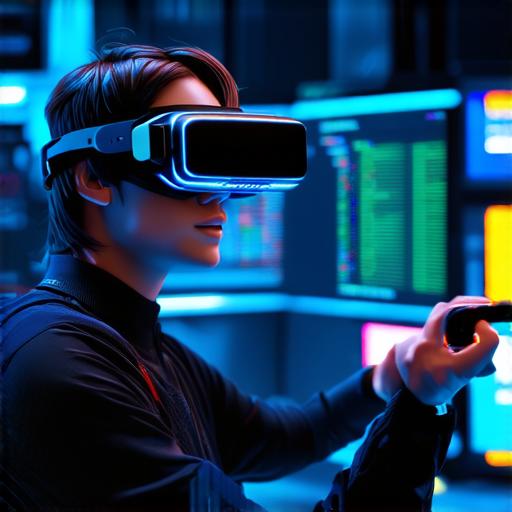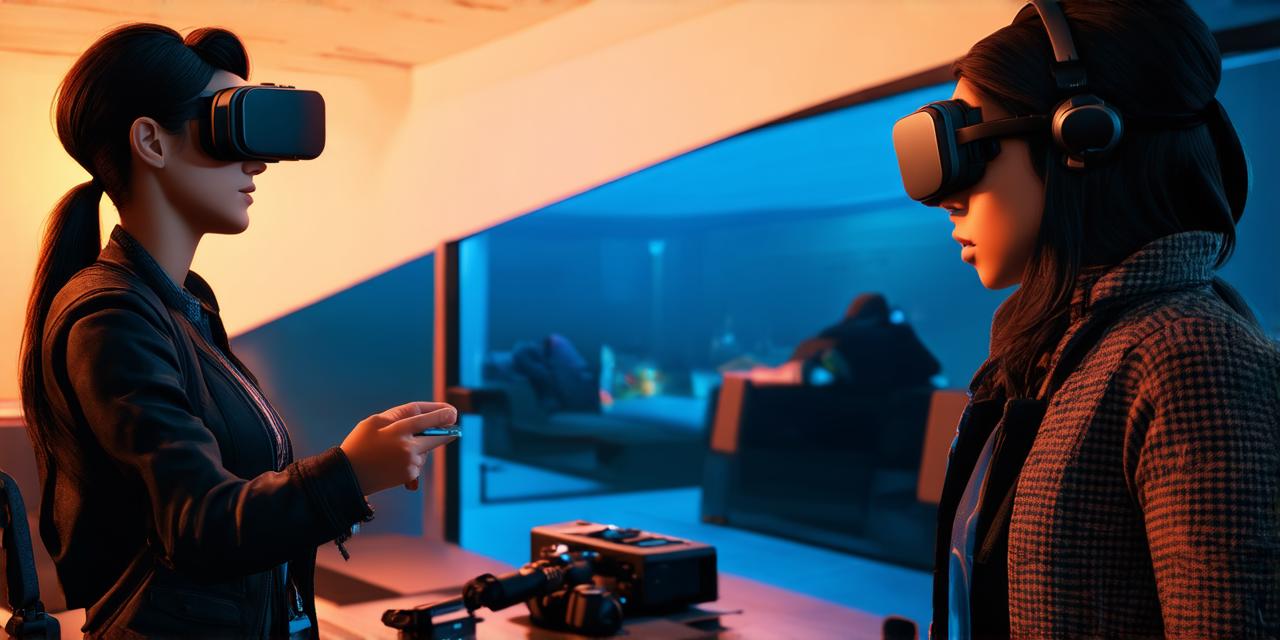1. 3D Modeling and Design
The first step in creating a VR application is designing and modeling the environment. This requires a deep understanding of 3D modeling software such as Blender, Maya, or 3ds Max. These tools allow developers to create realistic 3D models of environments, objects, and characters that can be easily imported into VR development platforms.
Case Study: Oculus’s Sanctuary is an excellent example of the importance of 3D modeling in VR development. The game’s stunning graphics and immersive environment were made possible through the use of advanced 3D modeling techniques.
2. Programming Languages
Virtual reality applications require programming knowledge, and there are several programming languages that developers can use. Unity and Unreal Engine are two popular VR development platforms that support C and C++ programming languages, respectively. Other programming languages used in VR development include JavaScript, Python, and Java.
Case Study: The game “Job Simulator” was developed using the Unity game engine and C programming language. It is an excellent example of how a programmer can create a VR application from scratch.
3. Motion Capture and Animation
Virtual reality applications require realistic character movement, and motion capture technology can help achieve this. By capturing real-world movements of actors, developers can create lifelike animations for characters in VR environments.
Case Study: “The Lab” is a VR application that uses motion capture to create realistic character movements. The game’s physics engine also allows players to interact with objects in the virtual world, creating a more immersive experience.
4. User Experience Design
User experience (UX) design is crucial for VR applications as it ensures that users have a positive and enjoyable experience while using the application. Developers need to consider factors such as usability, accessibility, and the overall user flow of the application when designing for VR.
Case Study: “Google Expeditions” is an excellent example of how UX design can enhance the VR experience. The app allows students to explore virtual worlds from anywhere in the world, making it both educational and fun.
5. 3D Audio
Audio plays a crucial role in immersing users in a virtual environment. Developers need to consider the use of spatial audio to create a more realistic soundscape that enhances the user’s experience.
Case Study: The game “Beat Saber” is an excellent example of how 3D audio can enhance a VR application. The game’s music and sound effects are placed in a 3D space, creating a more immersive experience for players.
6. Cybersecurity
Virtual reality applications have the potential to collect sensitive data from users, making cybersecurity a significant concern. Developers need to ensure that their VR applications are secure and protect user data from unauthorized access.
Case Study: Oculus’s Virtual Private Network (VPN) is an example of how developers can ensure the security of their VR applications. The VPN encrypts all data transmitted between the user’s device and the VR application, preventing hackers from intercepting sensitive information.
7. Hardware Requirements
Virtual reality development requires specialized hardware, such as headsets, controllers, and computers with high-performance graphics cards. Developers need to consider the hardware requirements of their target audience when designing VR applications.
Case Study: The game “Beat Saber” requires a computer with a minimum of 8GB of RAM and an Intel Core i5 processor or higher. This ensures that the game runs smoothly on most computers, making it accessible to a broader audience.
FAQs
Q: What programming languages are commonly used in VR development?
A: Unity uses C, while Unreal Engine uses C++. Other programming languages used in VR development include JavaScript, Python, and Java.
Q: How can motion capture technology enhance the VR experience?
A: Motion capture allows developers to create lifelike animations for characters in VR environments, creating a more immersive experience.

Q: What is the role of cybersecurity in VR development?
A: Virtual reality applications have the potential to collect sensitive data from users, making cybersecurity a significant concern. Developers need to ensure that their VR applications are secure and protect user data from unauthorized access.
Summary
Virtual reality development requires a unique set of skills, including 3D modeling and design, programming languages, motion capture and animation, UX design, 3D audio, cybersecurity, and hardware requirements. By understanding these essential skills and applying them in the right way, developers can create immersive and engaging VR applications that have the potential to revolutionize the way we interact with the world.
